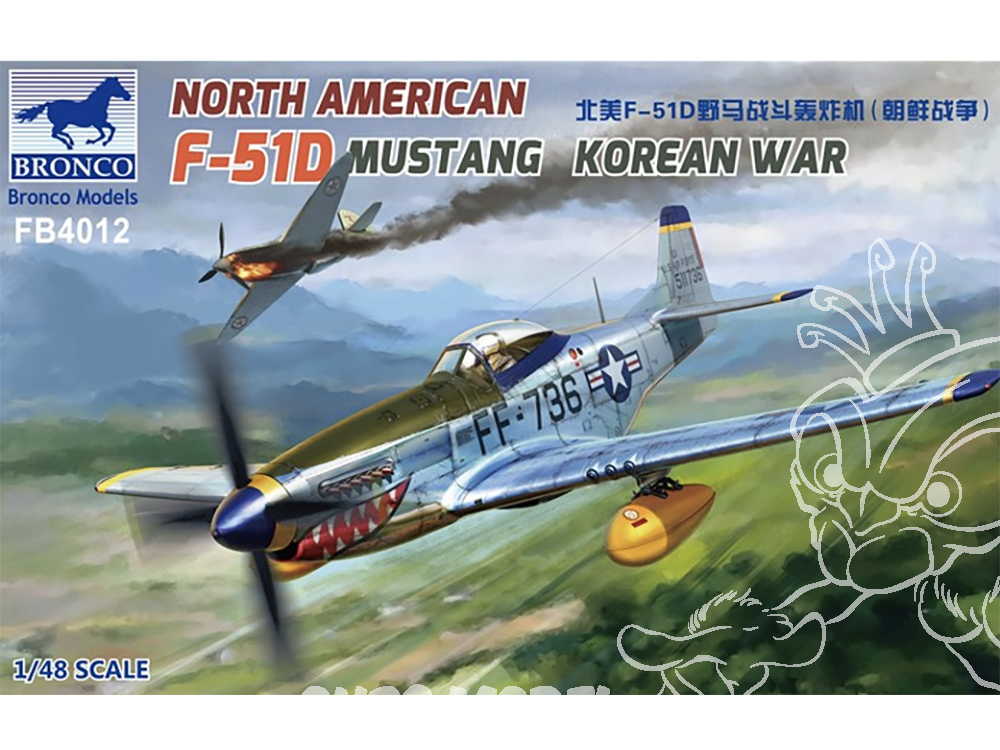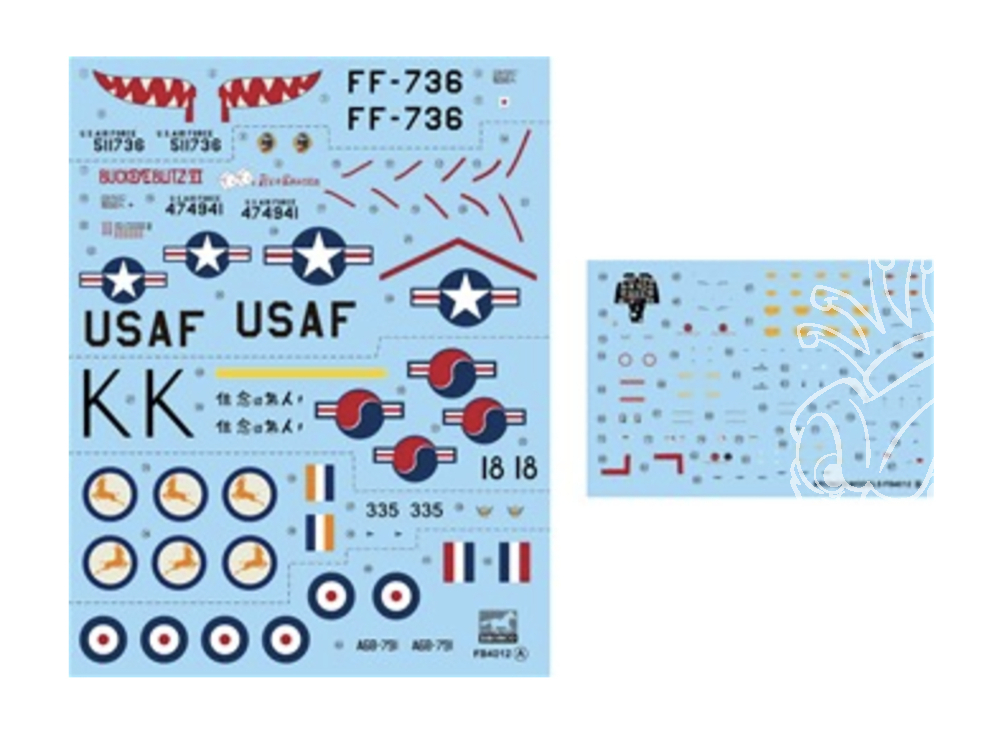Subtotal : 0 €
- Home
- Plastic model kits
- Korean War F-51D Mustang
Korean War F-51D Mustang
Description
The P-51 "Mustang" was a fighter developed by the North American Company for the United Kingdom in 1940 to replace the original P-40 aircraft requested from the United Kingdom.
On October 26, 1940, the P-51 prototype was first tested, and the factory code was NA-73, aka "Mustang" In November 1941, the first P-51 aircraft was handed over to the Royal Air Strength. In the latter part of World War II, the P-51 aircraft was widely used on the battlefield in Europe and Asia. The P-51 is available in a variety of variants, as well as a "Double Mustang" aircraft spliced from two "Mustang" aircraft, numbered XP-82.
The "Mustang" aircraft has a simple shape and superior performance. It is the most powerful propeller fighter of WWII. Its wings have a laminar aerodynamic profile. The laminar airfoil was the latest result of pneumatic research at the time, and the drag coefficient was very low, which could greatly improve the aircraft's flight speed. Some P-51s have changed the maximum flat flight speed to 764 kilometers. The last P-51 aircraft was equipped with a sub-tank, which improved travel and took off from the European base. He could escort the bomber to Berlin, the capital of fascist Germany.
After the end of World War II, large numbers of P-51Ds still served in the USAAF for many years. The United States Air Force was created in 1948, reforming the naming convention for aircraft models, replacing the "P" of the destroyer with the "F" of the fighter and the P-51 with the F -51. In addition, the "F" of the photographic reconnaissance aircraft has been removed and the F-6D and F-6K have been replaced by RF-51D and RF-51K.
On June 25, 1950, the Korean War broke out and the Mustangs entered the battle again. The Mustang is more suited to the small airstrip in South Korea than the F-80 and F-82 deployed in Japan. The F-51D deployed in Japan was immediately transferred to South Korea and put into action to slow North Korea's rapid advance. The Mustang took off from Gimpo, Busan and Pohang airports to perform close support missions. The Mustang was the primary aircraft for the UASF's short-range support mission at the start of the Korean War. At that time, the jet aircraft had limited battery life and could not stay above target for long.
In order to increase the close support force, the Boxer aircraft carrier sent 145 F-51s from the United States. These planes were quickly assembled and flew to the combat unit. Even the 18th Fighter Bomber Wing abandoned the F-80 and switched to a Mustang, which is probably rare in history. The Mustangs played a big role in preventing the North Korean offensive, giving the United Nations military some breathing space. The Mustang flew 62,607 combat support missions, lost 351, and most of them were shot down by anti-aircraft fire. The Mustang is not suitable for low altitude attacks. The liquid-cooled engine relies heavily on the fragile belly radiator. Once the radiator is damaged by a ground fire, the engine quickly overheats. According to other records, the Mustang shot down several North Korean Yakovlev fighters during the encounter.
- Brand:
- BRONCO MODELS
- Scale:
- 1/48
- Ref:
- BRMFB4012
- Category:
- Plastic model kits





